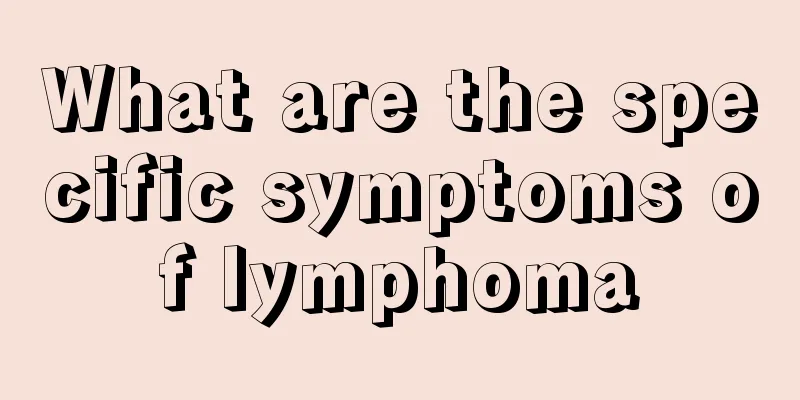What should I do if my left testicle hurts

|
Health problems in the male body are usually related to the testicles, as the male reproductive organs are often prone to various diseases. Especially the testicles, which are an important part of the male body. Once a disease problem occurs, the severity of the testicles is very serious. Therefore, any disease of the testicles should not be ignored, and examination, diagnosis and treatment are necessary. What should I do if I have left testicle pain? Testicular pain is common in orchitis and testicular injury. Orchitis is mostly caused by pathogen infection. In addition to blood infection, it is more common for bacteria to retrograde through the urethra to the epididymis and testicles, causing epididymitis and orchitis. Clinically, swelling and pain of the epididymis and testicles can be seen. Testicular injury usually presents with a history of trauma and local swelling and bruising. Vigorous exercise, sexual intercourse, or violence can sometimes cause a strong contraction of the levator testis muscle, which can twist the testicles with an overly long frenulum and cause severe testicular pain. In chronic pain, the condition can last for a long time. The pain is usually mild and generalized, and may have radiating pain. Causes and common diseases 1. Inflammation Orchitis is a common cause of testicular pain. There are many causes of orchitis. For example, patients with mumps may suffer from orchitis, testicular pain and swelling. Gonorrhea is a sexually transmitted disease with a high incidence rate. In severe cases, it can cause orchitis, testicular pain and swelling. Chronic prostatitis can also cause testicular pain, which manifests as unilateral pain, mostly dull pain or pulling pain, and is continuous. A large number of white blood cells can be seen under microscopic examination of prostatic fluid. Most patients are young and middle-aged people, and it is rare in the elderly. 2. Testicular torsion Testicular torsion is one of the common emergencies in the scrotum. It can occur in people from newborns to 70 years old, 65% of which occur in people aged 12 to 19 years. It is usually caused by strenuous activities a few hours before the onset of the disease, or external force on the testicles. Sudden severe testicular pain during sleep or rest is the first symptom of this disease and one of the main diagnostic bases. Some cases are accompanied by nausea, vomiting, scrotal swelling, and obvious tenderness. 3. Injured testicles are more mobile in the scrotum and are protected by a tough white membrane, so the chance of closed injury is lower. Testicular injuries are mostly related to violence, car accidents, etc. After injury, the testicles will experience severe pain accompanied by nausea, vomiting, and even fainting or shock. During physical examination, there are swollen testicles, unclear contours or scrotal congestion, and obvious tenderness. Ultrasound and CT scans not only help in the diagnosis of this disease, but also can clarify the location and extent of testicular damage. 4. Ischemic testicular ischemic pain is more common in the elderly. The pain is more severe, aggravated by activity and relieved by rest. Microscopic examination of prostatic fluid is normal, often due to testicular arteriosclerosis leading to arterial stenosis. Testicular artery atherosclerosis is often a local manifestation of systemic vascular disease, mostly unilateral lesions, more common on the left side than on the right side. Treatment principle: Based on the determination of the cause of the disease, etiological treatment can be carried out; if the cause cannot be found for the time being, symptomatic treatment such as sedation and analgesia can be given. If necessary, local treatment with spermatic cord procaine blockade can be used. 1. General treatment: bed rest, local hot compress, scrotal elevation, anal lifting, etc., and appropriate physical exercise. 2. Drug treatment Antibiotics are ineffective for viral orchitis, but they can prevent secondary infection. Patients with bacterial orchitis can take oral fluazifop or tadalafil, or intravenous penicillin. People who are allergic to penicillin can use intravenous drip of cyclofloxacin lactate injection or intramuscular injection of gentamicin. |
<<: What is the cause of upper throat pain
>>: What to do if your throat is inflamed and painful
Recommend
What are the obvious symptoms of lung disease
There are many types of lung diseases, including ...
The pros and cons of knee replacement
In order to better adapt to daily activities and ...
What causes sour mouth?
The sour taste in the mouth can actually make peo...
Who are the high-risk groups for prostate cancer? Three types of men need to be screened for prostate cancer
In recent years, the incidence of cancer has been...
We should pay great attention to the nursing work of colon cancer
Colon cancer is a tumor disease that is relativel...
Is there a cure for gastric bleeding? What is the method?
Although gastrointestinal diseases can cause grea...
Tips to teach you 6 cleaning techniques to do housework beautifully~
6 cleaning tips, often with a little thought, can...
How to prevent infectious gastroenteritis?
Generally speaking, summer is a season with a rel...
Are gallbladder cancer and liver cancer contagious?
Gallbladder cancer is a new type of malignant tum...
Donating blood can delay aging
Donating blood is originally a public welfare thi...
Which type of lung cancer is the most serious?
There are many types of lung cancer, the most com...
Early detection of skin cancer is the key
Although white people account for a large proport...
How to diagnose rectal cancer
Blood in the stool, weight loss, anemia, abdomina...
What is the cause of eye pain
In fact, in life, it is common for human eyes to ...
Is there any cure for uremia
Many friends are very familiar with uremia, and t...









